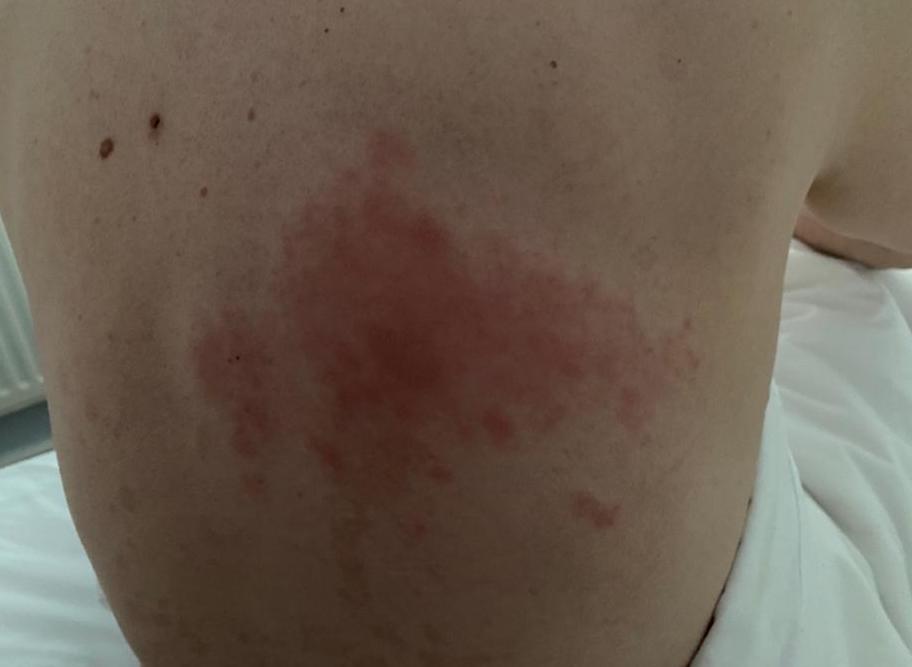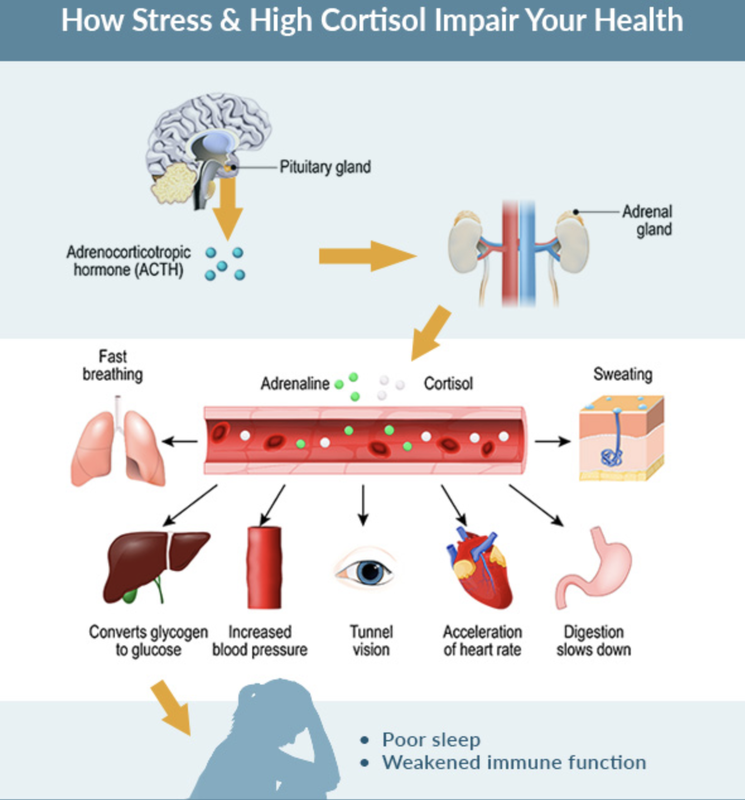|
This is a subject area that is tricky for me. I am very good at advising other people about how to train smarter, listen to their bodies and take recovery seriously. I am so aware of how not only physical, but also mental stress can take their toll on us if gone unchecked. But yet, we are not always good at taking our own advice. Well speaking from my own experience I decided to write a series of blog posts which will cover illness, signs of stress and how to recognise them, though to the recovery stages and getting back into training safely and hopefully stay well. Last week I started to feel some unexplained pains in my upper back which I initially shook off as DOMs after some good strength training sessions. My training had been going particularly well so I had no reason to think it was anything else. However, muscle soreness like that doesn't usually wake you up in the middle of the night, reaching for painkillers, and it doesn't give intermittent burning, stabbing feelings. A day or so later an angry red rash appeared on one side of my back and freaked me out slightly. A trip to the pharmacist and advised call to NHS 111 confirmed that it was shingles! I mean what is shingles exactly, isn't it a form of chickenpox that old people get? Well that aggrieved me for a start! Further investigation showed that it is also known as herpes zoster, an infection of a nerve and the skin around it. It's caused by the varicella-zoster virus, which also causes chickenpox. After a person has had chickenpox, the virus lies dormant in certain nerves for many years, then can become reactivated when the immune system is low. I have quite vivid memories of having chickenpox as a child, the itchy spots covered in calamine lotion that eventually scabbed over, which we were warned not to scratch or pick for fear of scarring. Shingles I have realised is a whole other level! The rash is the least of your worries - it's the intense pain caused by the nerve endings that is relentless. Being prescribed anti virals early I think is the key, but I found myself clock watching to see when I could take my next strong painkillers for some relief, and let's not even talk about how it affects sleep or trying to get comfortable in any position. The spread of the angry, raised rash was bizarre. As my partner Ian observed, the section on my back initially looked like a small map of Wales, however a day later it had stretched across one side, resembling something more like Greenland. Then there was the sprawling Galapagos Islands which had started to run around my side and across the front of my chest. Always, in textbook style shingles, never crossing the midline. My mood was really low and Ian tried to make me laugh by doing a little rendition of ‘All the Shingle Ladies’. I was due to do a sprint duathlon that weekend, and had been feeling really fit, performing well and particularly pleased to see my running getting back on form after previous Achilles injuries, so this was a really untimely blow. So why was it happening? As a coach it particularly bothered me, had I been training too hard? In fact over the past 6 months I have been training much smarter, following the protocols from my Menopause for Athletes course, to not put too much cortisol stress on my body, and had really been feeling the benefits of it. Well it didn’t take long for me to realise that this outbreak had been triggered by emotional, not physical stress. My friends and family were also quick to remind me that the past two years have been incredibly difficult with lack of work and Government support through Covid, and the uncertainty is still present in the events industry. Then there had been the recent, sudden death of a friend. I think it had all got become too much and had to come out somewhere. It interested me to find out more so that I could become more educated in terms of any of my coaching clients as well as myself. What is stress and is it always bad for us? A mid-20th century Austro-Hungarian endocrinologist named Hans Selye proposed that there were two types of stress: eustress and distress. Selye defined eustress as healthy stress. In terms of sport, when the training load is manageable and produces increased fitness, it’s eustress. On the other hand, excessive training can cause distress. Society generally uses the word ‘stress’ to mean ‘distress’ which implies both its mental and emotional aspects but that’s not how Selye described the term. Studies have shown that short-term stress boosts the immune system, and in terms of training, will also reap rewards. The key here, as I know only too well is that this type of short term training stress must be carefully measured, and interspersed with lower intensity work and recovery periods to allow our bodies to recover and adapt to then be able to manage increased load. This physical adaptation of increased fitness resulting from alternating stress and rest is called supercompensation. Short-term stress in general can be beneficial by boosting performance as well as bolstering our immune system. Moderate levels of stress have been shown to have an inoculating function which leads to higher than average resilience when we are faced with new difficulties. Of course, this example is just short-term stress, which in isolation may not cause us any harm at all. It's only when stress accumulates and exceeds our coping ability without adequate recovery that it becomes a problem. Stress is likely to occur after a build-up of life-changing events that can be either positive or negative. They could include a business realignment, a promotion or even something enjoyable such as a holiday. What matters is that there is a change to your normal routine. We all know that stress can make us feel upset, agitated and sometimes overwhelmed. The question is how does stress affect our body and our mind, and what can we do about it? The physiological effect of stress Within your central nervous system (your brain and spine) you have the autonomic system, which controls all of the processes that you do without thinking, such as breathing, digestion and your heartbeat. Within the autonomic system there are two systems of interest, which work in tandem with each other. These are the sympathetic system, known as the ‘fight or flight’ system and the parasympathetic system, or the ‘rest and digest’ system. The sympathetic system is responsible for increasing heart rate, increasing blood pressure and increasing blood sugar to help you to perform when stress hits. When you're stressed, this system triggers these necessary responses, and the function of your rest and digest system is reduced. The parasympathetic system is responsible for suppressing heart rate and bringing you back down to homeostasis. Another hormone released when we are stressed is cortisol. Cortisol is an energising hormone which increases the level of blood sugar. This is great in the short term to provide energy to react quickly, but in the long term it can be bad for the immune system as DHEA, which supports our immune system and is also released by the adrenal glands, can’t be released when cortisol is released. How to spot the warning signs Coaches and athletes like myself use tools such as Training Peaks to measure performance and training stress but this only tells half the story. Stress doesn’t exist in a compartment separate from the rest of our lives – it affects the whole person, no matter where or how it originates. Total load is the way to think about all of the stress that we encounter in our lives, both positive and negative. This is broken down as:
Spotting the warning signs
Athletes are well versed in spotting physical injuries, even at an early stage when they present as a niggle. But what about the psychological side of things? Here is a list of just some of the early warning signs of some of the feelings and behaviours associated with emotional stress*:
I have had my fair share of injuries along the way and pride myself in being pretty in tune with my body, adopting good strength and conditioning protocols to try and keep things in check. But mentally? I think like many I am perhaps not so attentive in this area. In hindsight I can recognise many of the early warning signs above but shrugged them off as 'hormonal' symptoms. So how can we better keep a check on this, and then know... When to stop and when to power through? This is where some of the great tracking apps come into play. I have been very aware of HRV (Heart Rate Variability) over the past few years, but admit I sort of dismissed it thinking I was the best judge of what was going on in my body and could decide how to train around that. I have completely changed my mind on that now, however and am tracking my HRV alongside a tracking app called 'Wild AI' which uses objective and subjective data to work with your female physiology to help you achieve your peak performance. The information around HRV has been illuminating - not only my own, but the research I have been hearing about elite athletes who have used their HRV data to gauge their training intensity with surprising outcomes. HRV measures the activity of the autonomic nervous system in response to stress - as in ALL stressors, not just those imposed by training. For me the answer to the question above was loud and clear. Shingles stopped me in my tracks and forced me to think about the whole picture in terms of body and mind. I have taken 10 days off exercise other than walking, and have been nourishing myself in all aspects. Like all curveballs in life, I believe these things are sent to make us reassess, take a step back and learn and grow. So in my next blog post I will be delving further into my learnings about HRV and sharing my insights into how this information can be used to complement our training protocols. I will also be specifically looking at how this aligns with the female physiology tracking app, especially given that hormone fluctuations during peri and menopause can cause elevated levels of cortisol. This is relevant not only to coming back from illness or injury but in our ongoing journey as well rounded athletes.
0 Comments
Leave a Reply. |
AuthorDenise Yeats is a coach, personal trainer, endurance athlete and avid adventurer. She is passionate about supporting women to achieve their goals, working with, not against their changing physiology. Archives
July 2024
Categories |
Proudly powered by Weebly






 RSS Feed
RSS Feed